Tips To Maximize Recoveries During The Holidays
 So you have a successful online store, growing good traffic to the site and sales are good. Are you set? Not necessarily as you may be losing lots of sales through Shopping Cart Abandonment. Did you know that Abandonment rates average 65% and as high as >80% during holiday season? Here are 7 key points to maximize your conversions. When implemented correctly, this technology can recover 10%-20% of your abandoners – that means you can increase online sales by >5% while you are sleeping. No brainer, right?
So you have a successful online store, growing good traffic to the site and sales are good. Are you set? Not necessarily as you may be losing lots of sales through Shopping Cart Abandonment. Did you know that Abandonment rates average 65% and as high as >80% during holiday season? Here are 7 key points to maximize your conversions. When implemented correctly, this technology can recover 10%-20% of your abandoners – that means you can increase online sales by >5% while you are sleeping. No brainer, right?
Do you know your cart abandonment rate? The easiest way to determine your cart abandonment rate is by logging on to your web analytics and checking the ratio of how many people place items in the cart (enter the checkout process) to how many actually buy (reach the Thank You page).
Using a series of carefully timed emails, called “cart abandonment emails,” you can recover up to 20% of the money you might otherwise have lost. Here how to do it in a seven easy steps:
1. How many recovery emails should I send?
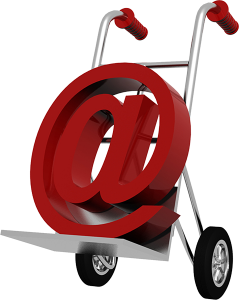
Best practice is to start with 3 emails. If you are willing to offer some kind of a promotion (free shipping, additional discount or a free accessory) to the abandoner then send the first 2 emails as customer service reminders and offer the promotion only with the third email. Once you have the campaign running for a while and you can optimize it further and can test adding a 4th and 5th emails and see if they have incremental recoveries. They typically do.
2. When should I send my recovery emails?
Timing is everything. To maximize your conversions the first email you send should be within 60 minutes of the abandonment while your brand is still “top of mind.” Tests have shown that waiting 24 hours to send your first email may negatively impact your conversion by more than 50%. The timing for 2nd and 3rd emails depend somewhat on the value of the product (is it a $25 T-shirt or a $3,000 handbag?) or if there is a deadline (e.g.: registration) and your other marketing touch points with the prospect. We typically recommend sending the 2nd email 2-3 days after the abandonment and the 3rd email 5-7 days after the abandonment. If the lead time to a purchase decision of your product is longer consider extending the delay for the 2nd and 3rd emails.
3. What kind of designs work best for recovery emails?
Keep it Simple. The key to maximizing conversions from these emails is to stay focused on the goal: bringing the abandoner back to the shopping cart to convert. We don’t want to have too many messages and options to distract the abandoner.
Mobile Friendliness: It’s likely that the abandoner will see your recovery emails on their smartphone so make sure the email is mobile friendly and clear (read more on mobile friendly emails) .
Effective Branding and Header: Branding needs to be very clear but don’t overwhelm them with a huge banner that takes away from our goal. You may want to include in the header design the best way to reach you and maybe an image of a friendly customer service person.
A Reminder of What They’ve Abandoned:: Show the product or products that were abandoned, but as a “tease.” Don’t provide all the product details; maybe just show the image, name and a basic description so that the abandoner is enticed to click to your site to see the rest.
Call to Action: Include a clear, bold, call-to-action button to “complete your purchase” or “return to cart.” Include the CTA both at the top and bottom of the email.
Consumer-Friendly Voice: Don’t try to be an aggressive salesperson with your first message. Instead of saying “Hey, what happened to you?” a better approach is, “Oops, we noticed you left an item in your cart.” Sound like you’re doing them a favor by reminding them that they didn’t complete their purchase. The second and third emails can slowly turn on the charm.
Urgency: Create some urgency especially as of the 2nd and 3rd emails and remind them that you cannot hold the item forever in their shopping cart and that they will soon lose the opportunity to complete the purchase.
Example 1: Love this example with clever copy and fun design
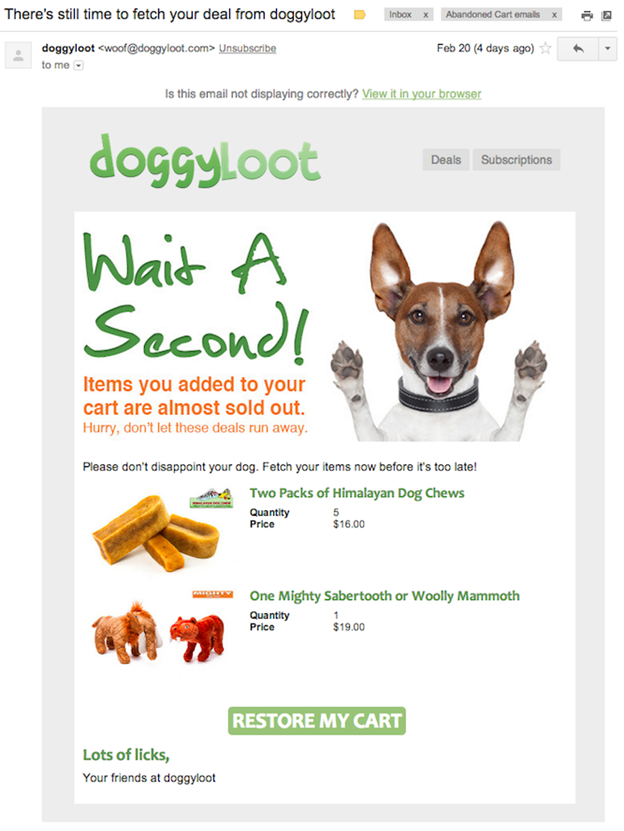
Example 2:
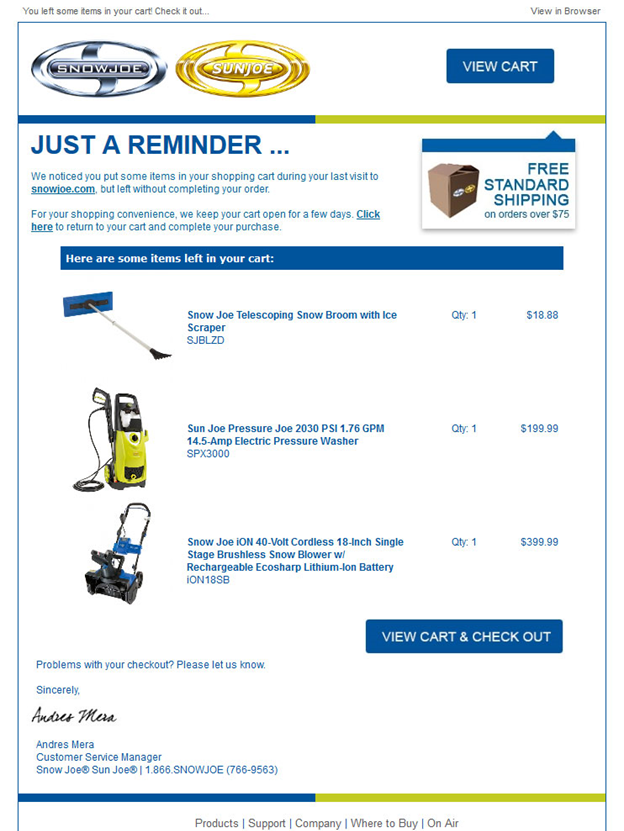
4. Great Copy from Subject Line to Email Content
Cart abandonment recovery emails will have a significantly better open rate than your regular emails but you still need to craft good subject lines and copy as we see in the example above Here are some subject lines that have had excellent results for some brands, but please run an A/B tests for the best results for your brand:
1st email:
- “Oops, did something go wrong?”
- “Did you forget something? We’re still holding your product in your cart!”
- Good News! Your Shopping Bag is Still Available
- “You forgot how much you want to buy this!”
2nd email:
- How can we help?
- Still interested in the XYZ you left behind on abc.com?
- Complete Your Order Today at abc.com
3rd email:
- Time is running out! Take advantage of 5% off now!
- We saved your cart, but only for a limited time! Complete your order today & get 10% OFF!
- Last chance! Come back for 10% off before your cart expires!
5. How do I know who abandoned my site?
Some ecommerce sites have some rudimentary cart abandonment functionality built in. So why should you use a standalone platform such as LassoBack or others? A typical ecommerce platform (e.g. Magneto) only captures abandoners who registered to the site while LassoBack captures any abandoner for whom we recognize their email address — they were sent email blasts and were “cookied” or abandoned after entering their email address in the checkout but did not register. The upshot is that LassoBack will capture 25%-50% more abandoners so your recoveries will be much higher.
6. What kind of results should I expect?
Obviously, results will vary depending on your site. In general, Unique Open rates of > 40%-60% are common with click-to-open (CTO) rates higher than 35%. Typical recoveries range 10%-20% with the best results in the 1st email and the one that has a promotion. See below a typical 3-part campaign where the 1st email is sent within 30 minutes of abandonment, the second after 3 days and the third after 5 days with a promotion.
Typical results of 3 part cart abandonment campaign (LassoBack platform)
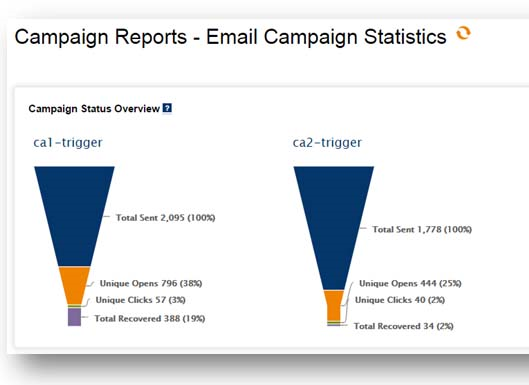
7. How do I define a recovery?
As you probably know, revenue attribution is a complicated matter in ecommerce. Before choosing your cart abandonment vendor make sure you understand how they measure revenue attribution. When do they take the “credit” for a transaction from a recovery email? This is a very important distinction as you want to be able to accurately measure the ROI from cart abandonment emails vs your other marketing channels. In the OpenMoves LassoBack platform (see below) we define recoveries as Direct or Assisted (similar to how Google defines remarketing attribution). We allow the user to define what a direct recovery is – for ex: anyone that clicked from a recovery email and purchased within 24 hours). You can also determine how long after the last “touch” from a recovery email you want a purchase to count as an Assisted Recovery – For ex: anyone that purchased 7 days after receiving a recovery email can be counted as an Assist.
Typical recovery dashboard (LassoBack platform)
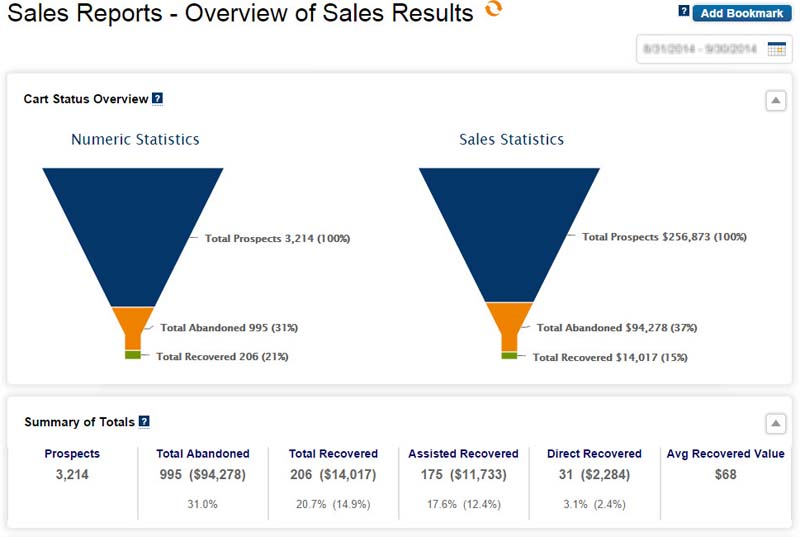
Bottom line: If you have an ecommerce site, using cart abandonment emails is a no-brainer. Most standalone cart abandonment platforms will provide you with infinitely more data than Google Analytics or an ecommerce platform such as Magento or Shopify. Costs are relatively low at <$500/month so ROI can be 10X and most of the work is done by the platform vendor.
Contact us to evaluate the return you may see from using this amazing technology.
Interested in learning more? Read the RFID case study and learn how they recovered >22% or read how non-profit Autism Speaks increased donations by 15%.












